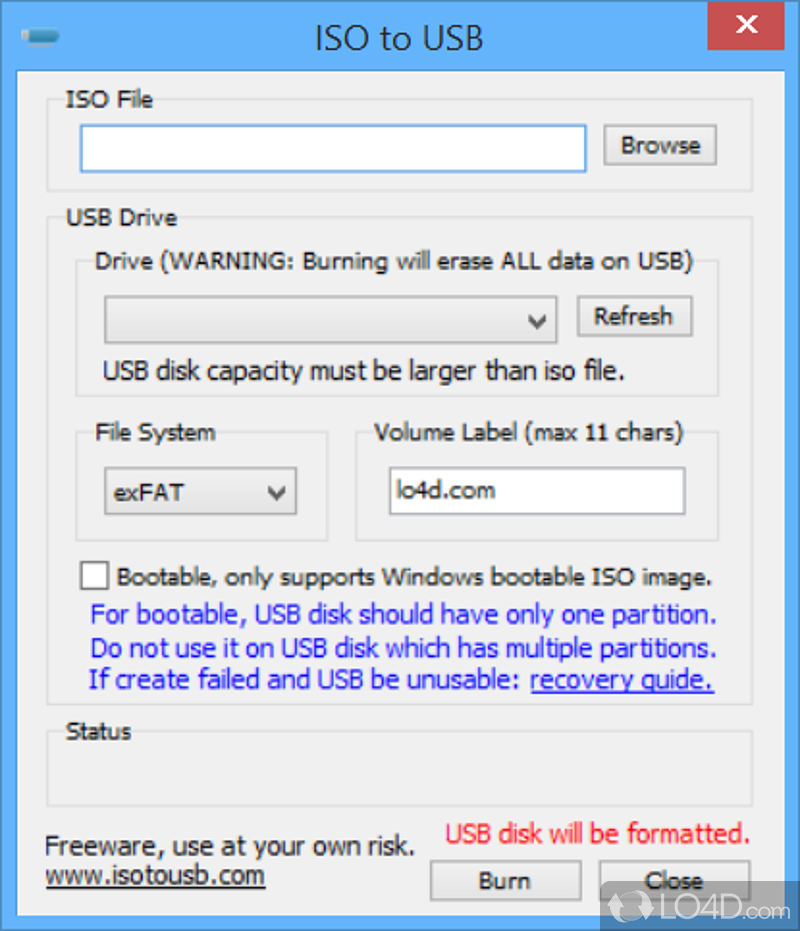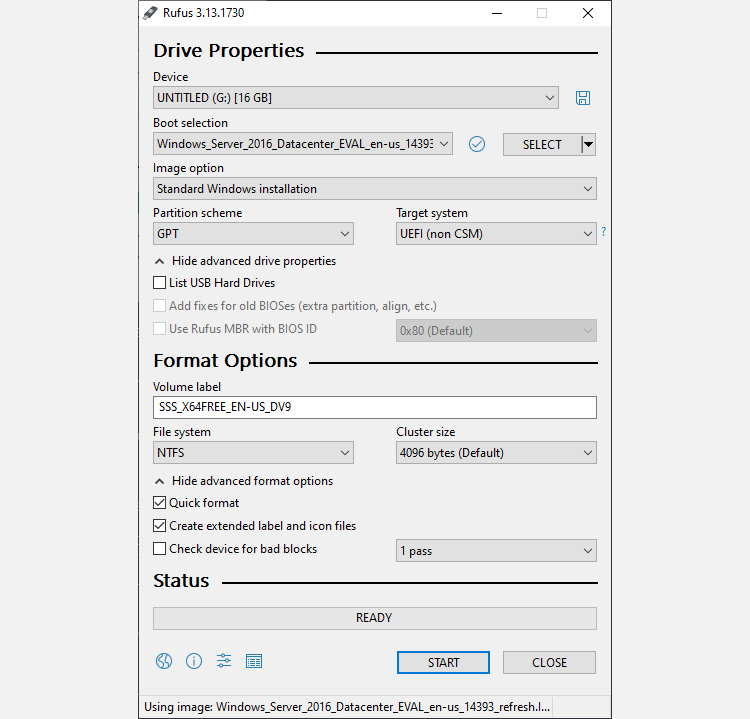

This will Boot using the FAT32 BOOT Partition which will use the files on the NTFS INSTALL Partition during the Windows Setup. The Boot Mode should be set to UEFI and Secure Boot should be ON. Power it up and press to access the BIOS Boot Menu. Power off your Dell Computer and insert your Bootable USB. Note it may take several minutes for the large files to fully copy over to your USB. Follow the steps to format the pen drive properly and restore it back to its original condition. In this sources folder copy the boot.wim file from the original sources folder of the ISO.Ĭopy all the files/folders from the Windows Installation ISO to the INSTALL Partition. After making a Bootable USB drive for installing Operating Systems like Ubuntu via Pen drive using softwares like PowerISO, when you format your pen drive using Windows or Ubuntu it will show about only 2 MB of memory in a 4 GB pen drive. In its place create your own sources folder.

Use USB as the Volume Label and the FAT32 File System.

Under Partition Scheme select GPT and under Target System select BIOS or UEFI. Under Boot Selection, select Non Bootable. Select your USB under the Device drop down. Setting up a GPT Partition Table on the USBįirst we will use Rufus to create a non-Bootable USB with a GPT Partition Table.
#Bootable iso to usb download
To get around this we can create a multi-partition USB with a FAT32 BOOT Partition and NTFS INSTALL Partition. You can download Windows ISO file from Microsoft site and make a bootable USB drive from it. Recent Microsoft installation media from direct download links include an install.wim that exceeds 4.0 GB and therefore if a solo FAT32 Partition is used, the install.wim is truncated and the installation media is therefore corrupted. One of the limitations in the FAT32 File System is the upper file size of 4.0 GB. Many Dell systems expect Bootable Media to have a FAT32 Boot Partition.


 0 kommentar(er)
0 kommentar(er)
